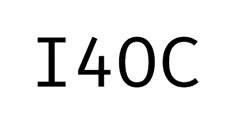Self-injurious behaviors without suicidal intent: need for mental health promotion
DOI:
https://doi.org/10.18050/psiquemag.v11i1.2654Keywords:
Self-injurious behaviors, Adolescents, Self-insultsAbstract
This work is a consequence of the question that the authors face in a growing problem, which is gaining more and more followers; self-injurious or self-destructive behaviors without suicidal intention, this practice consisting of deliberately causing damage to one's own body, specifically through cuts, burns, pinches, scratches, abuse of drugs and other substances, including food, can have, depending on whether they are serious, various intentions, in which suicide is not related. These behaviors are the product of some anomalies in the perception, mainly of adolescents, in which the individual seeks to hide a feeling of discomfort, of emotional pain, which will alleviate for a moment that feeling that he may be feeling, but that being Repetitive can lead to great depression and probable suicide. Conditioning factors, risk factors, and some strategies that point to the need to promote mental health urgently, especially in young people, are revealed.
References
Acevedo, Y., Lizcano, J. y Serrano, H. (2020). Conductas autolesivas en los adolescentes, una revisión documental. Universidad Cooperativa de Colombia. https://repository.ucc.edu.co/bitstream/20.500.12494/18046/1/2020_conductas_autolesivas.pdf
Agencia Peruana de Noticias Andina. (2019). https://andina.pe/agencia/noticia-%C2%A1alarmante-cada-dia-se-suicida-una-persona-el-peru-749249.aspx
Agüero, G., Medina, V., Obradovich, G. y Berner, E. (2018). Comportamientos autolesivos en adolescentes. Estudio cualitativo sobre las características, significados y contextos.Arch Argent Pediatr 116(6),394-401. https://www.sap.org.ar/docs/publicaciones/archivosarg/2018/v116n6a06.pdf
Albarracín, L., y González, L. (2020). Vínculos afectivos familiares en mujeres adolescentes con conductas autolesivas no suicidas. Cuadernos Hispanoamericanos De Psicología, 19(1), 1-18. https://doi.org/10.18270/chps.v19i1.2977
Ale, M., Noguez, C. Noguez, L, Sterren, M. y Urraza, M. (2019). Cuando lo íntimo se muestra a lo institucional conductas autolesivas. Cuestiones de Infancia. Revista de psicoanálisis con niños y adolescentes, 21(1). Recuperado de https://publicacionescientificas.uces.edu.ar/index.php/infancia/article/view/704/626
Ale, M., Molinaroli, G., Noguez, C., Noguez, L., Ojeda, K., Soto, L., Sterren, M. & Urraza, M. (2017). Del corte a la metáfora: conductas autolesivas en adolescentes. Problemáticas adolescentes. Intervenciones en la clínica actual. Buenos Aires: Noveduc, http://www.codajic.org/sites/www.codajic.org/files/Trabajo%20Libre_%20Del%20corte%20a%20la%20met%C3%A1fora_%20conductas%20autolesivas%20en%20adolescentes_0.pdf
AEPNYA. (2017). Autolesiones protocolo. http://www.aeped.es/sites/ default/files/documentos/autolesiones.pdf
Brunner, R. Parzer, P. y Haffner (2017) Prevalence and psychological correlates of occasional and repetitive deliberate self-harm in adolescents. http://www.ncbi.nlm.nih.gov/pubmed/17606826
Charrasquiel, D. y Hurtado, Y. (2020). Self-injurious behaviors in adolescents, theoretical keys to their understanding : a study of the state of the art. http://hdl.handle.net/10495/15559
CNN en español. (2018). Al menos una de cada cinco jóvenes de 14 años en Reino Unido se autolesiona, revela informe. 20:07 ET (00:07 GMT) 29 August, 2018
Cornella, J. (2018). Conducta autodestructiva en el adolescente. http://www.codajic.org/sites/www.codajic.org/files/Conducta%20autodestructiva%20en%20el%20adolescente.pdf
Czarniawska, B. (2004). Narrative in social science research. UK: Sage
Fleta, J. (2017). Autolesiones en la adolescencia: una conducta emergente. Facultad de Ciencias de la Salud. Universidad de Zaragoza. 47, 37-45. Dialnet-AutolesionesEnLaAdolescencia-6393711.pdf
Gonzales, S., Pineda, A, y Gaxiola, J. (2018). Depresión adolescente: factores de riesgo y apoyo social como factor protector, 17(3). https://revistas.javeriana.edu.co/index.php/revPsycho/article/view/12993
Hawton, K., & Pirkis, J. (2017). Suicide is a complex problem that requires a range of prevention initiatives and methods of evaluation. British Journal of Psychiatry, 210(6), 381-383. doi:10.1192/bjp.bp.116.197459. https://www.cambridge.org/core/journals/the-british-journal-of-psychiatry/article/suicide-is-a-complex-problem-that-requires-a-range-of-prevention-initiatives-and-methods-of-evaluation/98A57FA7986D34B5D6A100AE0E4F0D57
Javierre, E., Amiguet M,. Mengual, J., Fuertes, A., Ruiz, P. y García, N. (2016). Lo último entre adolescentes. Los cortes en la Piel. Boletín de la Sociedad de Pediatría de Aragón, La Rioja y Soria. ISSN-e 1696-358x, ISSN-e 1696-358x, Vol. 46, Nº. 1 (Enero-Abril). págs. 35-35 https://dialnet.unirioja.es/servlet/articulo?codigo=7154227
Kogan Cogan, B. (2017). Tesis. Factores de riesgo asociados a intento de suicidio. USMP. https://hdl.handle.net/20.500.12727/2846
Mertens, D.M. (2010). Research and Evaluation in Education and Psychology. 3a. Thousand Oaks: Sage Publications (3a Edición).
Obando, D., Trujillo, A. y Prada, M. (2018). Conducta autolesiva no suicida en adolescentes y su relación con factores personales y contextuales. Universidad de la Sabana, Chía, Colombia. http://revistas.uned.es/index.php/RPPC/article/view/21278
Ospina, M,. Ulloa, M, y Ruiz, L. (2019). Non-suicidal self-injuries in adolescents: Prevention and detection in primary care, 45(8), 546-551. https://doi.org/10.1016/j.semerg.2019.02.01
Tamayo, M. (2003). El Proceso de la Investigación Científica. (4ta ed.). Editorial Limusa.
Valarezo, A. (2018). Análisis Personológico en base a la biografía de Mike Tyson desde las Perspectivas Psicoanalítica Social y del Aprendizaje. http://repositorio.utmachala.edu.ec/handle/48000/12464
Vásquez, C. (2017). Alexitimia y autolesiones en un grupo escolares de Lima Metropolitana. Lima: PUCP. http://tesis.pucp.edu.pe/repositorio/handle/123456789/411
Verde, F. (2018). Tesis. Orientacion suicida en adolescentes escolares de la institucion Educativa Jorge Portocarrero Reboza de Ventanilla. http://repositorio.uigv.edu.pe/handle/20.500.11818/2917
Yam, H. (2017). Cultura y construcción de la personalidad. Psicología Iberoamericana. 25(1), 5-7. https://www.redalyc.org/pdf/1339/133957571001.pdf
Downloads
Published
How to Cite
Issue
Section
License
Copyright (c) 2021 PsiqueMag

This work is licensed under a Creative Commons Attribution-NonCommercial-NoDerivatives 4.0 International License.
You are free to:
- Share — copy and redistribute the material in any medium or format
- The licensor cannot revoke these freedoms as long as you follow the license terms.
Under the following terms:
-
Attribution — You must give appropriate credit, provide a link to the license, and indicate if changes were made. You may do so in any reasonable manner, but not in any way that suggests the licensor endorses you or your use.












